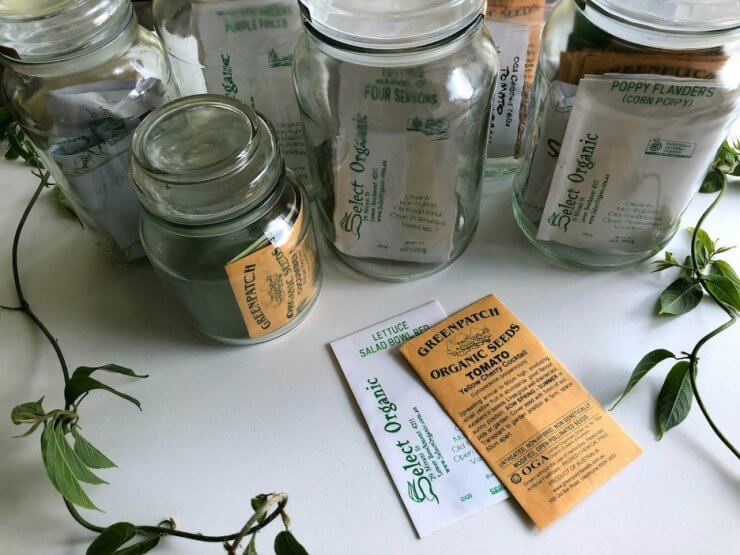
My local gardening community is the best. I recently attended a fall seed swap in a nearby pumpkin patch, which inspired my green thumb for next year. Everyone exchanged seeds from this year’s plants, previous years’ harvest and exciting heirloom varieties I’d never heard about. If you love gardening too, you should learn how to host your own swap to build community and create a vibrant future together.
What Is a Seed Swap?
Seed swaps are events hosted by plant enthusiasts who want to share what they have in their gardens. They also exchange heirloom seeds, which come from plants that have been grown and harvested by people over multiple generations. I typically get plant varieties that I wouldn’t usually find at local garden shops. The resulting biodiversity helps our ecosystem and makes my garden a more lively place.
Why Are October Seed Swaps Important?
October is the perfect time to meet with other gardeners because everyone’s harvesting the last veggies of the season and getting ready to do things like plant bulbs. You can spend the winter charting your garden based on what you bring home. I also note my next year’s various planting, blooming and harvesting dates while cozied up by my fireplace.
Heirloom Seeds and Their Many Roles
A collection of heirloom seeds does so much more than grow the same plants people have loved for generations. They also serve some purposes that surprised me during my first fall seed swap.
They Preserve Non-Hybrid Distinctions
Scientists breed hybrid plants to achieve specific things. I love giant tomatoes, so sometimes I get beef tomatoes at my grocery store that are bigger than what I could grow at home. Cross-pollinated seeds achieve that size difference. There’s nothing wrong with hybrid varieties, but preserving the original species is also essential.
I try to grow a mix of heirloom and hybrid plants to maintain diversity. They produce the best harvests if I spend October gathering seeds and putting down fresh mulch to maintain an ideal soil temperature for my plants’ root systems. Your backyard will also be ready for your incredible new additions if it isn’t full of dead plants when spring arrives.
Heirloom Plants Support Ecosystems More Resiliently
Cross-pollinated plants get specialized pollination to reach their genetic goals. Heirloom plants get open pollination. Any pollinator can visit them, which makes the environment healthier. Diverse pollinator populations shield plants from bacterial growth and support their life cycles. Since climate change is causing extreme droughts, preserving the ecosystem with tools like heirloom plants is crucial.
The Seeds Celebrate Cultural Histories
Plants are part of our cultures. Heirloom seeds passed from grandparent to grandchild tell stories about what the family cooked over the years and which plants kept everyone going.
Heirloom varieties also physically preserve histories. The Cherokee Nation distributed 10,000 packets of them in 2022. Participants grew historic varieties of gourds, corn, beans and other vegetables that Indigenous people weave into their cultures.
How to Host Your Own Seed Swap
If you want to help the environment and strengthen your community, plan a local exchange event. I’ve helped friends do the same by using some easy seed swap tips.
1. Market Your Event
Gardeners have to find out about your seed swap, so market the event where they’ll hear about it. You could post about the event in local plant-focused social media groups and hang posters in farmers’ markets, flower shops or garden centers. I learned about my first swap through a poster in a coffee shop. Get creative to reach the most people possible.
2. Prepare Storage Supplies
People might arrive at your swap with sandwich bags of seeds. Remind anyone attending that they should label their varieties with the species name and growing requirements. You could even suggest eco-friendly packaging materials to stick with a green theme.
Don’t forget to bring some airtight containers for optimal preservation, like tiny glass vials. Someone might arrive and need packaging. I’ve also accidentally ripped my fair share of tiny envelopes.
3. Encourage Seed Varieties
When I was preparing for my first swap, I thought I needed to bring the most impressive seeds possible. The poster I saw included tips about saving seeds from vegetables, like heirloom varieties. I felt confused. Make sure everyone knows they can bring their most culturally significant seeds as well as others from everyday backyard plants. The goal is to create a diverse collection for everyone to choose from.
4. Provide Seed Collecting Information
I raised plants for years before learning about seed saving. Prepare and publish helpful information about the process before your event begins. Anyone interested in attending should know how to collect seeds from common plants, like bell peppers. Drying is a crucial step that not many people know about. Indicate how long the drying process must take for each species so attendees can follow actionable, easy steps.
5. Save Time for Conversation
Community is just as important to a fall seed swap as the plants. Extend your event for at least an hour, if not longer. Everyone should have time to catch up, form friendships and share gardening tips. You’ll get a crowd with a diverse skill set, so sharing expertise is crucial to making any swap successful.
Support Nature and Your Gardening Community
Seed swap events are foundational to my community. They bring everyone together, help the ecosystem and celebrate cultures. Create one for your neighborhood this October to join in the fun. You might even meet some new friends who make gardening an extra fulfilling hobby.



